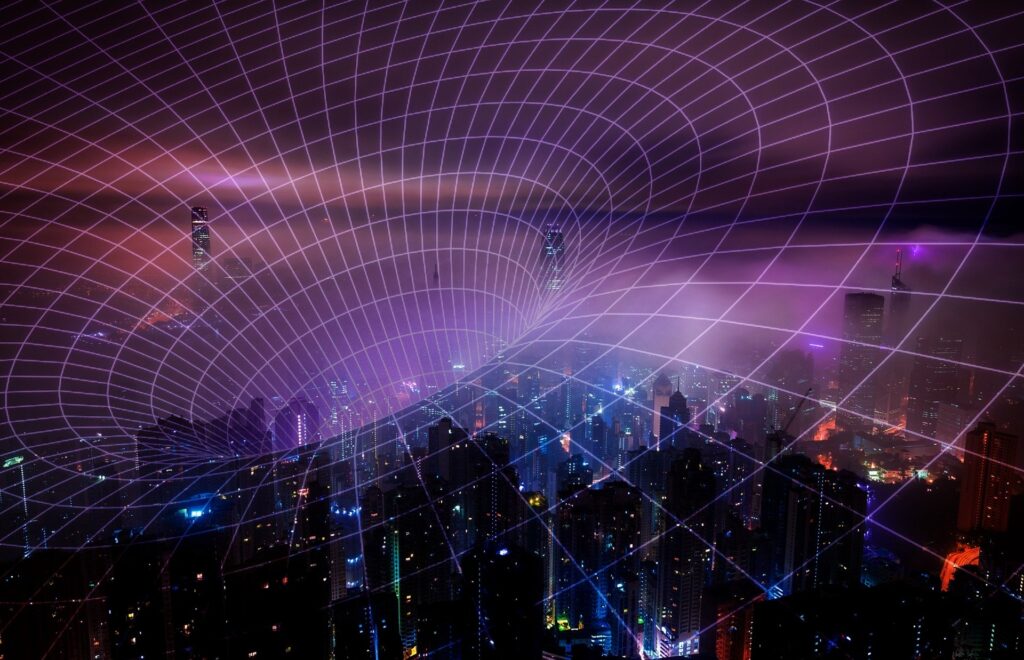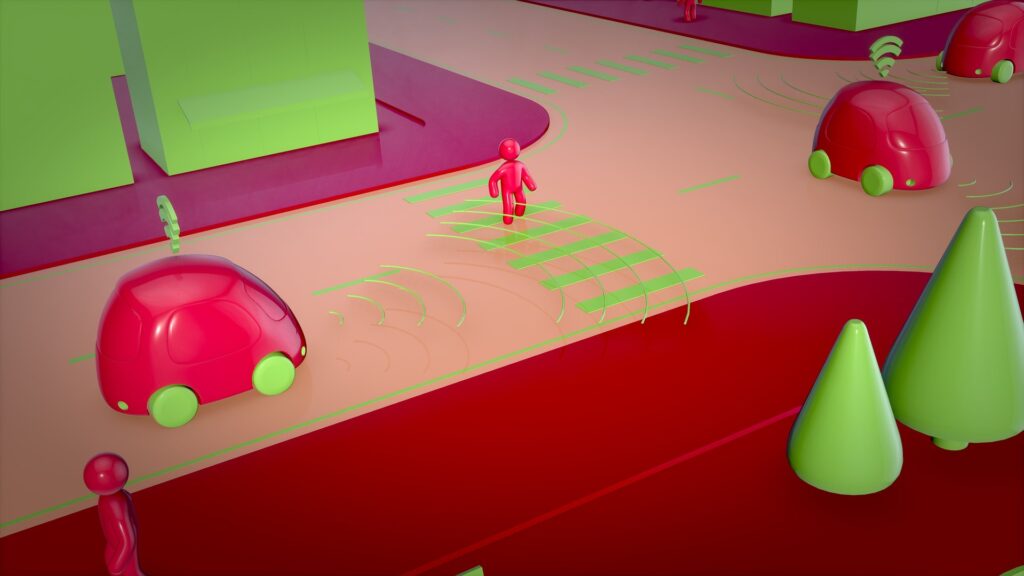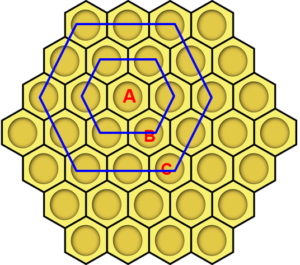Telecommunication is as old as the invention of script and writing. In the ancient times, people used to tele-communicate through handwritten letters carried by a personal messenger. With evolution, the role of personal messenger was assumed by the postal services. The technology debuted in the area of telecom with invention of Telegraph in 1837. It further got a push with the invention of Telephone in 1876. Since then, there have been consistent improvements in the telecom technology.
With all the progress, there was something that was still holding it back. It was the wire. The wire attached with the device was limiting the pace of development that telecom could impart to the world. In late 1970s, with the invention of early wireless technology, the world started a journey of fast paced development that is still ongoing. It has now brought the human race to the fifth generation of wireless technology that the 5G Network is going to enable for us.
Brief about the 5G Network
5G will be able to provide a super-fast mobile broadband. Going by the specifications and claims by the tech companies, 5G Network is supposed to be around 100 times faster than the current 4G. Another important aspect of a network is the Latency. Latency is basically the time elapsed between the request from the user and the response of the web service. The 5G Network will have latency that will be around one third (or less) of the 4G network. These are the obvious benefits of 5G over 4G. But what makes 5G Network truly stand out is the network slicing capability. Network slicing allows operators to allocate a slice/portion of the network with specific data speed and latency, for a specific use case.

Technically, 5G Network will enable four services which will make our communication technology more robust and ubiquitous. These services are:
- Enhanced Mobile Broad Band (eMBB)
- Massive Machine Type Communication (mMTC)
- Ultra Reliable Low Latency Communication (URLLC)
- Massive Multiple Input Multiple Output (MIMO)
Better Connection Density
All Smart Technologies involve heavy use of sensors. These sensors collect data from their surroundings and send the data to designated servers. These sensors need to be connected to the internet. Sometimes due to lack of enough bandwidth and/or to reduce power demand, they need to buffer the data to send later. The current 4G Network supports only 2,000 connected devices per 1 square kilometre area. The 5G Network will be able to support upto 1 million devices per 1 square kilometre area. What this means is that a lot many devices will be able to provide the real-time data. This ability to be ever connected will come with a price in terms of battery requirement. So, further innovation is needed to make these connected device more power efficient. Manufacturers have been making good progress on this.
Impact of 5G Network
In one of my earlier articles, I talked about how Digital Transformation with Smart Tech is revolutionizing the world. The article mentions 5 areas that the Smart Tech is changing drastically. We will consider those 5 areas further in the context of 5G Network coming to reality. The areas are:
- Smart Mobility
- Smart Cities
- Home Automation
- Connected Healthcare
- Smart Factories (Industry 4.0)
Interested readers can read the Smart Tech article using the link below.

Smart Mobility
Smart Mobility refers to vehicles that can drive themselves. When we talk about Smart Mobility, the picture of an autonomous car comes to mind. But, autonomous driverless vehicles have been around for long. The automatically guided vehicle (AGV) systems in the warehouses are programmed to follow a predefined path (guided by markers or wires). The mining industry has been using the driver less mining trucks in the quarries for long. One of the well known companies that makes these mining equipment is Caterpillar. They have been working on the autonomous vehicles since 1985.
Smart Mobility in today’s context is a vehicle that can take you from point A to point B without the need of manual intervention. These vehicles will need to be well aware of their surroundings and should be intelligent enough to avoid hurdles, other vehicles and most importantly, humans on the road. The LiDAR (Light Detection and Ranging) technology helps the vehicle get a 360 degree view of its surroundings.
Yet, for an autonomous vehicles to work efficiently on the road, they will need to be able to connect with each other and exchange information to avoid collisions and also traffic congestion. Imagine a centralized control center like the air traffic control, monitoring the vehicles on road as the vehicles talk and maneuver. This falls in the category of mission critical. Such a system will need to be accessible all the time and also need to be available on a low latency network. A 5G Network can fulfill both the requirements by employing network slicing.

Smart Factory
I have talked about the Smart Factory in my earlier article: How Smart Technology is Transforming Your World. I am borrowing the description of smart factory from that article as below.
In a Smart factory, the product being manufactured will have all the data about its design and manufacturing process. A network of connected machines will perform the sequence of steps/operations of the manufacturing process. The exact sequence of operations will be decided by this network of machines, run-time. It is based on various other factors like the quantity of the product to be manufactured and so on. This desired flexibility in the sequence of operations is based on the good old FMS concept.
The 5G Network will facilitate real-time connection and communication between the robots/machines to execute the production activities. They may not need to transfer a lot of data, but reliability and low latency of connection is crucial here. So, a private network with specific requirements can be created for this. There will also be real-time communication between the Production, Maintenance and Logistics departments. The use of virtual reality in training the workers and augmented reality to assist the workers in maintenance will improve the overall productivity.
Smart City and Home Automation
A smart city will have a huge number of devices connected and communicating with each other in real time. The current 4G Network is not able to handle a lot of connections due to low connection density. Similarly, to be able to control the devices at your home in real time while you are driving or shopping, needs a reliable and fast connection. The 5G Network can fulfill these requirements.
With 2020 came the COVID19 pandemic that stopped the world. Due to the pandemic, there was a high demand for remote working and collaboration. I have talked about the impact of COVID19 in one of my earlier articles. Interested readers can read the COVID19 impact article using the link below.
While the current technology stack and network is supporting the ‘remote work’ well, there is a wish list to make it more office like. Augmented reality along with 5G Network is going to play a big part in ensuring you get a virtual office at home. From automation that has become part of everyday life, such as automatic speakers to the more futuristic technology such as holograms. With 3D hologram meetings and reliable fast access to the office network, remote work has a bright future in the world of 5G.
Connected Healthcare
With high speed and low latency of 5G Network, the medical professionals will be able to enhance and speed up their services to assist more patients. Imagine a doctor observing a patient (through an HD video) being rushed to the hospital in an ambulance. Imagine the devices in the ambulance transmitting the vitals of the patient to the hospital server and the doctors analyzing the data and preparing for treating the patient before arrival. With most of the non care tasks taken up by the connected devices/robots, the doctors will be able to devote more time to patients. Imagine a specialist doctor able to perform the surgeries on remote patients through precision robots acting on the command of the doctor while looking at a high definition augmented reality video stream.
The possibilities are endless.
Areas of Disruption
Every new advancement in technology disrupts some of the old technologies and businesses. The scale of disruption depends upon how widely the new technology is going to be used. As mobile communication is pretty much ubiquitous, any new advancement there has the capability of disrupting a large number of existing businesses.
With its unique new capabilities, the 5G Network will be able to disrupt quite a few sectors and industry verticals. In the section on Home Automation, we talked about the ‘remote work’ paradigm forced in by the COVID19 pandemic. With 5G and associated advances in AR/VR, the remote work will become the new normal. This means that businesses will be able to employ people working from anywhere and that will reduce the demand for a dedicated office space thus disrupting the commercial real state business. Shops that don’t need the customers to be really present there can also take advantage of these new advancements thus further disrupting the commercial real state and other associated sectors.
Driverless cars becoming ubiquitous will reduce the number of cars on the road. It will disrupt the automotive sector which is already struggling due to emergence of ride sharing. With less cars/vehicles on the road, the emissions would reduce and may possibly disrupt the industry/organizations that are currently in the business of fighting air pollution. There are quite a few other sectors that may face challenges from the 5G Network. With disruptions, the 5G Network will sprout some new industry verticals and businesses as well.
The key is to think ahead and innovate to keep your business relevant in future.
Expected Socio Economic Growth
Seamless reliable connectivity, enabled by the 5G Network will bring sweeping changes improving productivity in all spheres of life. One thing that we have observed in the past is that access to technology and connectivity empowers people. It was the access to mobile technology that made India’s financial inclusion program a big success with direct benefit transfer (DBT). The countries that are struggling due to low productivity and poverty because of lack of traditional infrastructure will get a chance to leapfrog those problems to a certain extent with the help of 5G Network.
A Silicon valley based Drone delivery startup, Zipline, is operating a fleet of Drones in the African countries of Ghana and Rwanda to deliver blood and other medical supplies to the rural areas. These areas are not easy to reach through the conventional mode of travel due to lack of proper road infrastructure. But Drone delivery has made the need for road infrastructure unnecessary (so to speak). Due to limited resources, currently, the drones are being used to deliver the essential supplies only. With 5G Network there is a possibility of using the drones for the eCommerce deliveries.
As for the monetary value, according to a study conducted by IHS Markit, 5G Network will add value equivalent to 13.2 trillion USD to the global economy by 2035.
Different research bodies/companies have different estimates on the economic value add and the number of jobs 5G will create. But, there is no doubt that 5G Network will take the world to the next level of productivity and prosperity.
What do you think about 5G network? Share your thoughts in the comments below.
- Four Growth Strategies to Scaleup Your Business - March 14, 2021
- Innovative India: Platforms For Billion+ People - January 5, 2021
- Innovative India: Searching For Lost Glory - October 15, 2020



Awesome
Nice